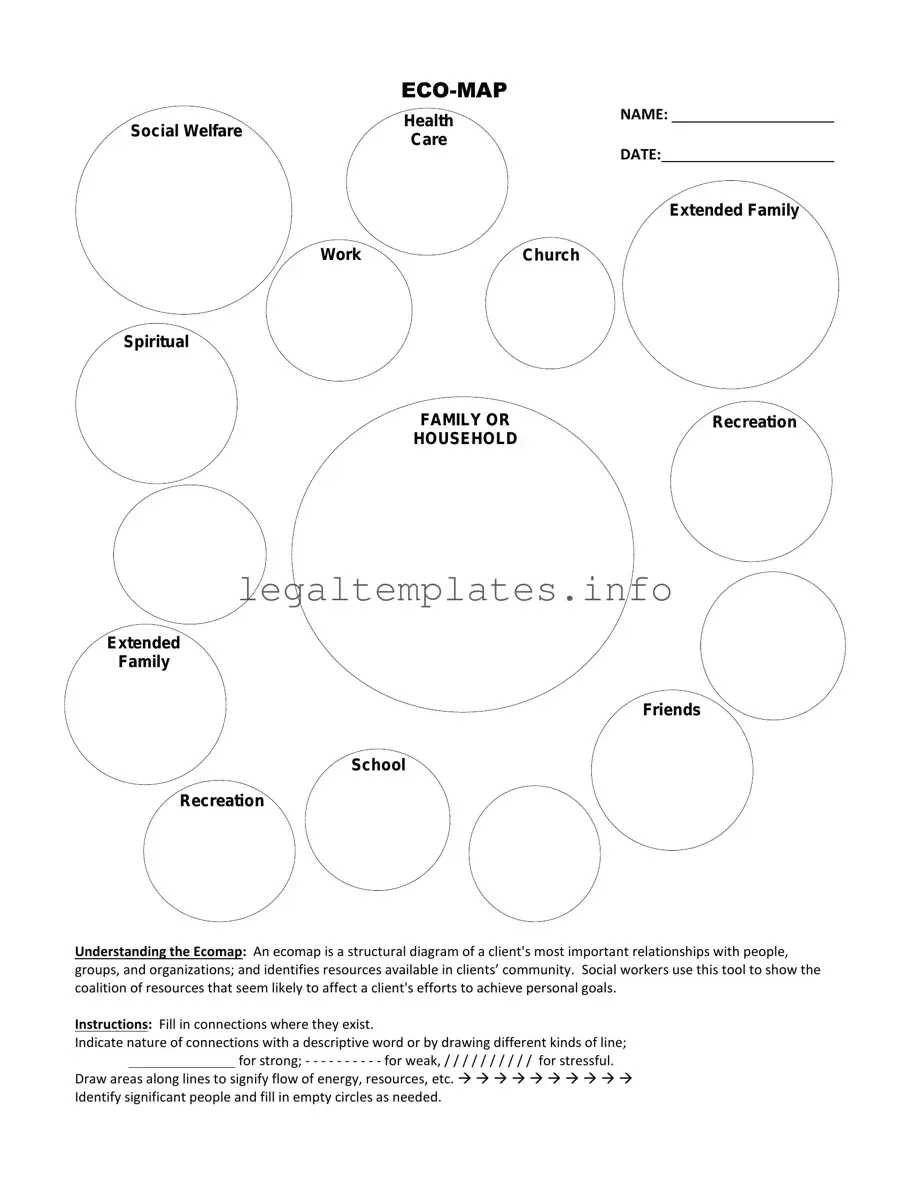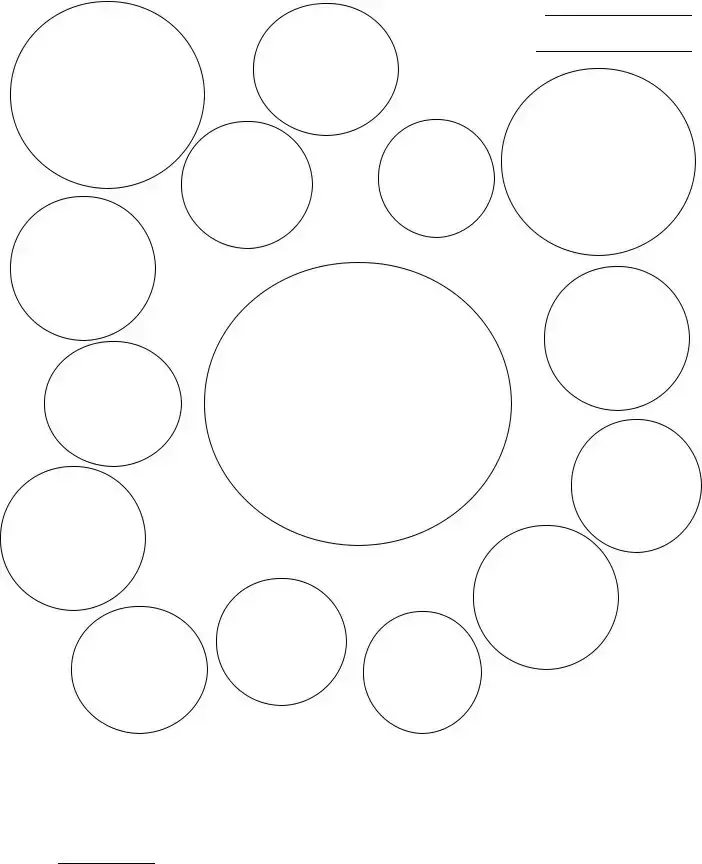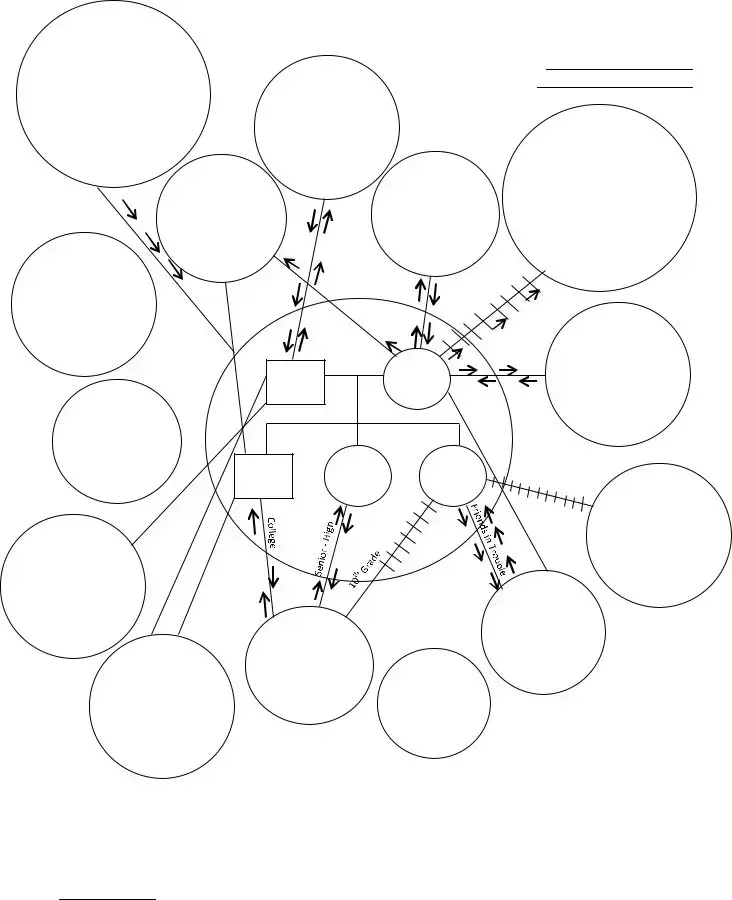What is an Eco Map form?
An Eco Map form is a visual tool designed to map out an individual's social and personal relationships to their surrounding environment. It illustrates the dynamic interconnections between a person and the various systems or groups they interact with, such as family, friends, work, health services, and educational institutions. This form is particularly useful for professionals in social work, therapy, and counseling to understand and address the complexities of a person’s life circumstances.
Who can benefit from using an Eco Map?
Individuals working within health and social care fields, such as social workers, therapists, counselors, and educators, find Eco Maps very beneficial. Families and individuals seeking to gain insights into their own relationships with various environmental systems may also find it helpful. Essentially, anyone who wishes to explore the complexities of their social and environmental interactions can benefit from an Eco Map.
How is an Eco Map created?
Creating an Eco Map involves drawing a circle in the center of a page to represent the individual or family unit. Around this central circle, various other circles are drawn to symbolize different systems or groups that the person interacts with. Lines are then drawn to connect these circles with the central one, with different types of lines representing the nature of the relationship (strong, weak, stressful, etc.). Sometimes, additional symbols are used to convey more information about the connections.
What do the different lines and symbols in an Eco Map represent?
In an Eco Map, solid lines typically represent strong, positive connections between the individual and a system or group, while dashed or dotted lines indicate weaker connections. A line with zigzags often signifies a stressful or conflict-ridden relationship. Symbols such as arrows can show the direction of energy or resources between the individual and the systems, indicating whether the influence is primarily giving, receiving, or mutually beneficial.
Can Eco Maps be used for groups or only individuals?
Eco Maps can be adapted for use with both individuals and groups, including families or community groups. While the process and symbols might be similar, the focus when mapping a group is on the collective relationships and dynamics within the environmental systems they interact with. This can highlight how group interactions influence individual experiences and vice versa.
What kind of information is needed to fill out an Eco Map form?
To fill out an Eco Map form effectively, information about the individual’s or group’s significant relationships and connections to various systems is needed. This includes details about family members, friends, workplace or school, health care providers, social services, and any other relevant groups or services they interact with. Understanding the quality of these relationships and how they impact the individual or group is crucial.
How can an Eco Map be used in professional settings?
In professional settings, an Eco Map can be used as a diagnostic tool to assess and understand the complexities of a client's environmental interactions. It helps professionals identify areas of strength and support, as well as stressors and challenges that the client faces. This understanding can guide the development of more contextualized and effective intervention strategies. Moreover, it can facilitate discussions with clients about their relationships and the impact these have on their well-being.
Is any special software required to create an Eco Map?
No special software is required to create an Eco Map. While some professionals may use digital drawing tools or specialized software for convenience and to enhance the visual appeal, Eco Maps can be effectively constructed with just a piece of paper and pens or pencils. The key to an effective Eco Map lies in the clarity of its symbols and the accuracy of the information it represents, not in the sophistication of the tools used to create it.


